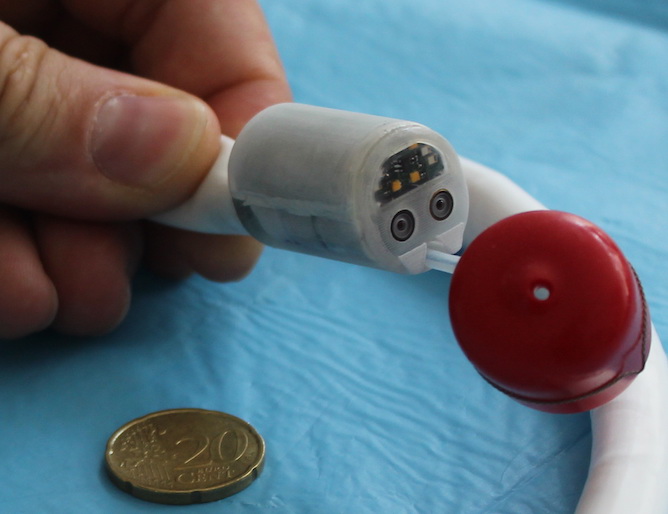Robot technology for a pain-free colonoscopy
Colon cancer is the fourth most common cancer worldwide but unlike some other more prevalent cancers is 90 % curable if caught early, making screening programmes particularly effective. An endoscopy or colonoscopy involving a miniature camera at the end of a semi-flexible tube, “is a very effective procedure but it is uncomfortable, even painful in some cases. People do not want to take it,” says Prof. Paolo Dario, coordinator of the EU-funded Endoo project, and professor of biomedical robotics at the BioRobotics Institute of Sant’Anna School of Advanced Studies in Pisa, Italy. Usually, a doctor inserts the camera-equipped tube through the anus and pushes it through the colon to detect cancerous lesions or polyps. “Even if we could use alternative non-invasive techniques like DNA screening, we need to go into the colon to remove the polyps. Or if we detect a cancer from a blood sample but do not know where it is, we still need a colonoscopy to locate it,” Prof. Dario explains. Pain occurs because of the bends in the colon which make it difficult to push the semi-flexible tube along its length, requiring some skill by the operator to avoid stretching the colon.
Specially designed capsule operated by robot
EU researchers have now developed a more flexible and substantially less painful device. “Rather than pushing from the outside, which is the origin of the pain, we pull the colonoscope through the colon using small magnets at the tip of the tube,” says Prof. Dario. “These magnets are coupled with an external magnet controlled by a robot, to pull the head of the colonoscope while performing the visual examination using a platform with a large number of components,” Prof. Dario adds. The patented tube-head capsule includes a control unit with a specially developed human-machine interface and image analysis system, high-resolution camera with high-intensity illumination and additional tools to remove polyps and treat lesions. The soft tube itself is used for insufflation, lens cleaning, water flushing and operating the vision module. “We have developed all the components of the system to a level at which their performance is very good, comparable with and in some cases overtaking the performance of conventional instruments,” Prof. Dario says. The research also included complicated modelling of magnetic fields to ensure the external magnet operated by a robotic arm works as efficiently as possible, as well as advanced studies of different materials for the flexible tube.
Laboratory testing carried out
The prototype device has already undergone extensive in vivo laboratory tests and ex vivo tests on parts of deceased animals and using a very advanced sensorised colon simulator. “We do not do any tests with live animals,” Prof. Dario emphasises. With the tests showing very good results, a request for human trials has been submitted to the University Hospital of Torino, Italy, one of the project partners. “This is a huge step forward as the main bottleneck for commercialisation of medical devices is human tests,” Prof. Dario noted. The most challenging part of the project was to demonstrate that the prototype system can navigate a colon simulator with different people controlling it. “Interestingly, we found that younger doctors used the device more easily,” observes Prof. Dario. This makes the device easier to roll out for mass screening, and for more people who feared the pain and embarrassment of traditional endoscopy to come forward, enhancing the survival rate for such cancers.
Keywords
Endoo, robot, colon, health, colon cancer, colonoscopy, endoscopy, biorobotics, robotics

